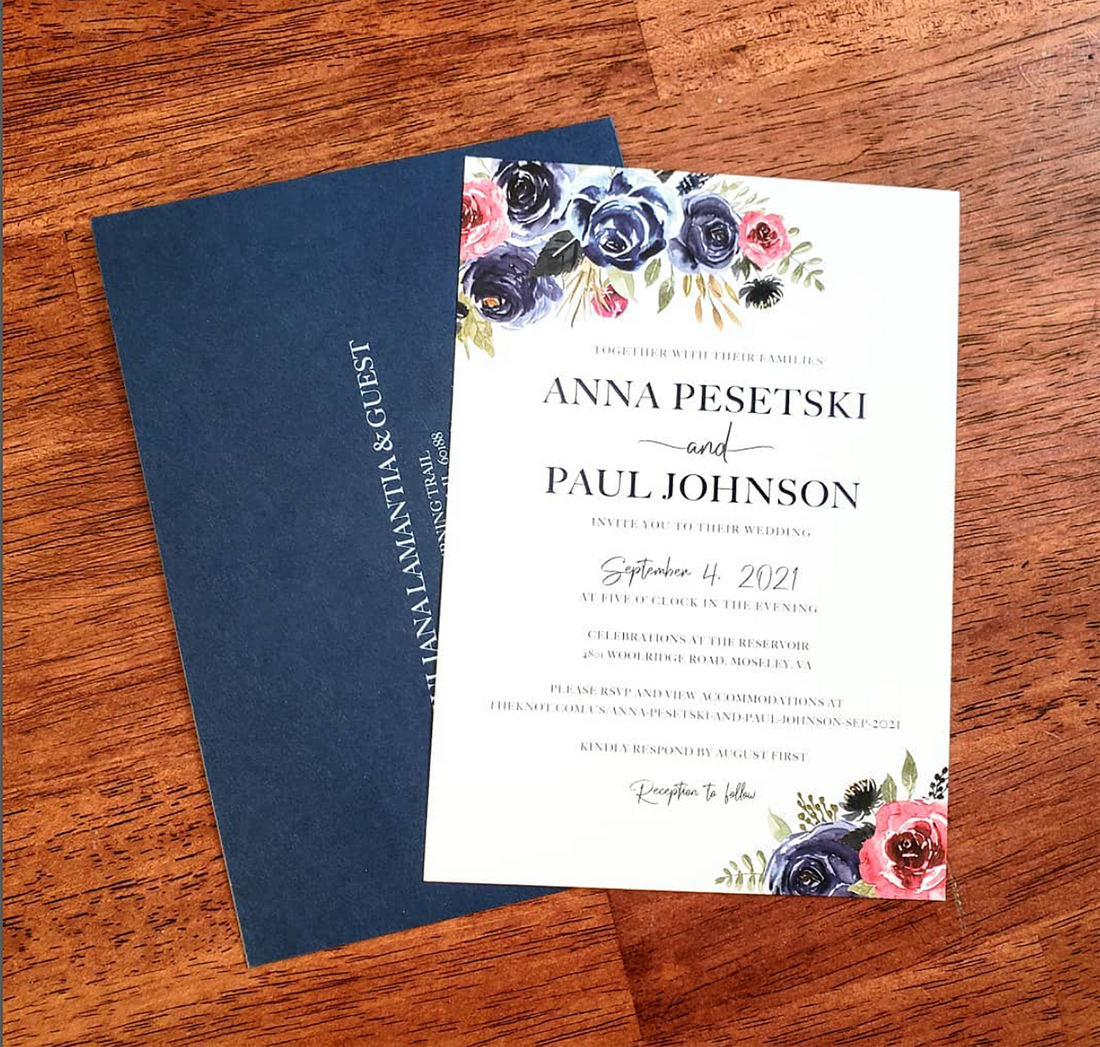Ever wonder how some invitations have art that literally shine? Or ink that is pressed into the paper, adding texture and boldness? There are various printing techniques to consider when designing your invitations. These different methods can infuse flare and personality into your wedding invites. While they range in price, there are always ways to add personal touches that can elevate your invites without breaking the budget. Your invitation designer can help show you what’s possible.
Digital printing
Digital printing is making a print from an electronic file. It’s the same as a computer printer in an office, but on a larger scale/higher quality at a commercial printer. It’s typically the least expensive form of printing. Elevate it with different types of paper.
White ink printing
Love the look of white addresses on navy envelopes (like on the featured image for this blog post)? A white ink printer with opaque ink is used to achieve it. Standard printers cannot actually print in white - they print everything else while keeping the white portion unprinted, exposing the color of the paper underneath. White ink is stunning on dark or brightly colored stock or envelopes to create a sharp and eye catching aesthetic.
Letterpress
Letterpress is one of my personal favorites, and is the oldest form of printing. The design is made into custom plates that are coated with ink and pressed into the paper. It can be a nod to the past on your invites, making it a wonderful mix of modern and traditional depending on design. Go all out with a full letterpress invitation with multiple colors, or stick to one color to be more cost effective. You can also mix letterpress elements with a digital invitation to really accentuate important details, like names or art.
Foil Stamping
Imagine your names in shiny gold, or perhaps some flower embellishments in stunning silver on your invitations. Foil stamping involves applying metallic or colored foil using metal dies. It can be used to accentuate certain elements of your invitations, like the names. Mix it with digital or letterpress. Go with bright or light colors on dark colored paper for something truly special.
Embossing
Paper embossing is a technique in which the paper is raised in the shape of the design. It can look very clean and elevated. Since the embossed design is still the color of the paper, it’s best used for embellishments, but not necessarily to communicate important information on your card (but then again, rules are meant to be broken, so it really depends on your event and the vibe you’re going for!) Your designer can help you with this.
Which printing technique do you think fits your vibe and vision best?

